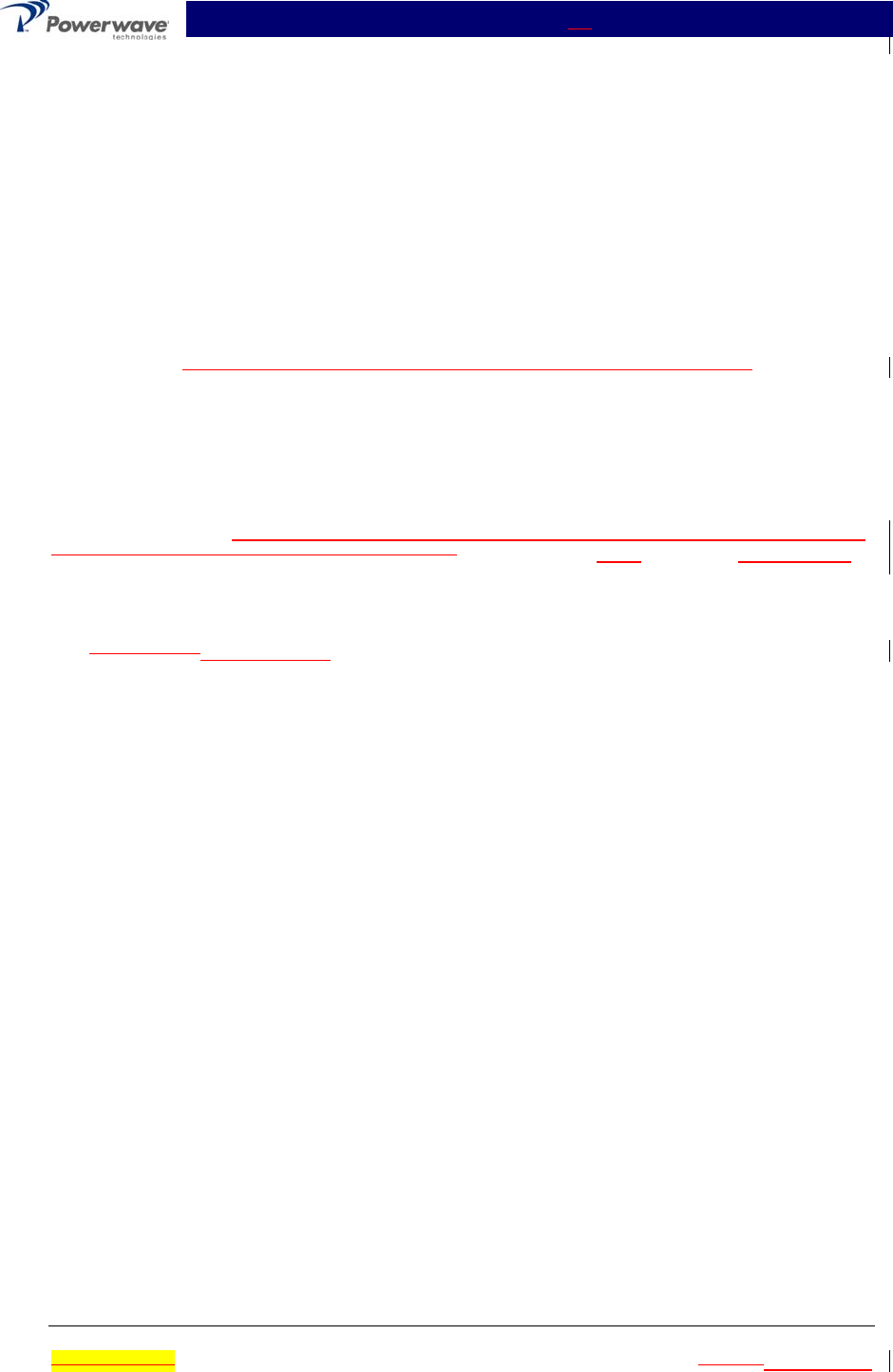User Manual

MCA9129-90-A Installation & Service Manual
Ó Copyright Powerwave Technologies, Inc., July 2001. All rights reserved
044-05060 Rev. C 4-6 July 2001November 2002
4-5.3 Amplifier Monitoring
In the main and error amplifier modules, all normal variations are automatically compensated for
by the feedforward loop control. However, when large variations occur beyond the adjustment
range of the loop control, a loop fault will occur. The alarms are displayed in the front panel indi-
cators and output via a 21-pin connector on the rear of the module to the subrack summary board
for subsequent remote monitoring.
4-5.4 Amplifier Module Cooling
Although each amplifier module contains its own heat sink, It is cooled with forced air. Three fans
for are used for forced air cooling and redundancy. The fans are located on the front and rear of
the amplifier module, draw air in through the rear of the amplifier, and exhaust hot air out the front
of the module. The lower front fan is not monitored for failure as are the other two.
The fans are
field replaceable (refer to paragraph 5-6.2).
4-6 Power Distribution
Primary DC power for the system is provided by the host system to the subrack. The subrack
supplies each amplifier module with +27 Vdc directly and via the RF power splitter/combiner. The
amplifier module has linear and switching regulators that generates required DC voltages such as
a DC/DC converter that converts the +27 Vdc to +15 Vdc, +5 Vdc, +9V and -5 Vdc from +27Vdc.
4-7 Intermodulation
The MCA9129-90MCA9129-90-A amplifier is designed to deliver a 120-watt composite average
analog power, multicarrier signal, occupying a bandwidth less than or equal to 25 MHz, in the
bandwidth from 869-894 MHz. The maximum average power for linear operation, and thus the
amplifier efficiency, will depend on the type of signal amplified.
4-7.1 Two-Tone Intermodulation
When measured with two equal CW tones spaced anywhere from 30 kHz to 25 MHz apart, and at
any power level up to the peak power, the third order intermodulation products will be below
-65 dBc at 100 watts output, below –60 dBc at 120 watts output.
4-7.2 Multitone Intermodulation
Adding more tones to the signal will lower individual intermodulation products. If the frequencies
are not equally spaced, the level of intermodulation products gets very low. When the frequencies
are equally spaced, those products fall on top of each other on the same frequency grid. The av-
erage power of all intermodulation beats falling on the same frequency is called the composite in-
termodulation; it is -65 dBc @ 100 W output, -60 dBc @ 120 W output, or better, with a maximum
of one MHz channel spacing.










